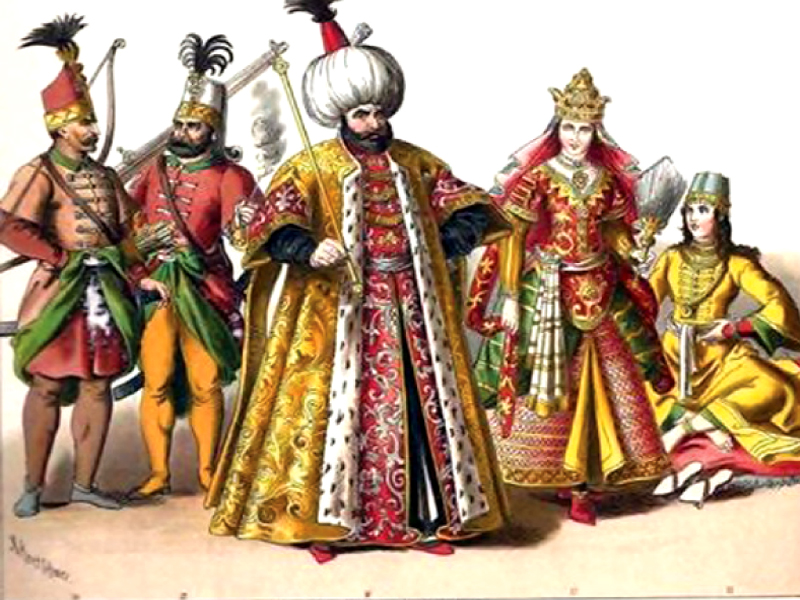
An exhibition of artworks from the 18th century onwards opens at Gallery6 on Friday (today) at 5pm. The exhibition, titled “Splendid Artworks from a Collector’s Assets”, will be inaugurated by Australian High Commissioner Peter Heyward.
The pieces on display are mostly based on Islamic art and include a variety of interesting chromolithographs, original watercolour paintings, calligraphic works, and other artefacts. The pieces have been collected from around the globe over the last 40 years by Asad Raza, an international consultant for Islamic art.
“I have been collecting these items all my life. Antiques were always valued in my household where my forefathers encouraged collecting them. They told me these were everyday items from a glorious era, what you see at the gallery is only the tip of the iceberg,” said Raza, who is currently based in the US.
On entering the hall, fascinating lithographs from the 18th century depict the journey of “Ghilaf-e-Kaaba” (the covering cloth known as kiswa) with the caravan of pilgrims on camel backs on way to Mecca. Also on display is a rare Italian lithograph depicting the 1951 flooding of Haram Shareef and the efforts to handle the emergency.
Complementing the Islamic heritage setting of the display is a lithograph depicting the 18th century floor plan of Masjid-e-Nabvi depicting specific architectural details. Prophet Mohammad’s (PBUH) name has been written in multiple and diverse forms and scripts through the centuries. At the exhibition, a Kufic script is on display by Dr Critchlow Kieth, a celebrated writer of Islamic art and architecture. It depicts the name of the prophet 99 times. Another rare piece is an early 18th century illuminated manuscript of the Quran from the Mughal era with Persian translation and commentary.
In the calligraphy section, there is a collection of 12 calligraphic works of Quranic verses with Chinese translation inscribed by renowned Muslim Chinese calligraphers. Arabic scripts made by master calligraphers Haji Noor Deen Mi Guang Jiang and Haji Abdul Hakim, among others are a rare treasure.
Art connoisseurs will also see a miniature in ‘Maghrebi’ — a traditional mystical script. It is from ‘Dalailul Khairat’, a spiritual artwork written by renowned Moroccan sufi scholar Mohammed Al-Jazuli.
There is also a chromolithographic image of the legendary Wazir Khan Mosque in Lahore in 1846 and an 18th century reflection of the Mughal court with courtiers and Mughal warriors depicting the grace and style of the civilisation. One can also see a rare Mughal Bazuband, embroidered in gold thread and with Islamic verses inscribed on it. There is also an amazing rare Mughal amulet from early 18th century, which is embroidered with ‘Sura Ahad’ from the Quran in gold thread. The outstanding feature is the creativity of embroidering the Sura in mirror reflection.
Another interesting series is five lithographs by Dutch engraver Maurice Bauer, who has made fascinating drawings depicting the Islamic world. Then there is an eye-catching British indenture on deer skin bearing a five shilling court stamp which is waxed, sealed and signed. It dates back to September 16, 1885.
Among the brassware items is a large, round Cairo-ware tray with decorative inscriptions and a pierced Syrian vase with intricate floral pattern. The 1910 vase is inscribed with Quranic verses.
“The artworks have a lot to offer as they provide a journey into Islamic history. The rare collection is worth seeing,” said the gallery’s curator Arjumand Faisel.
Published in The Express Tribune, November 2nd, 2013.
COMMENTS (3)
Comments are moderated and generally will be posted if they are on-topic and not abusive.
For more information, please see our Comments FAQ

































1714024018-0/ModiLara-(1)1714024018-0-270x192.webp)









@rasgullah - you are as incorrect as one can be.
Arabic culture is our culture. The rest are not important to us.